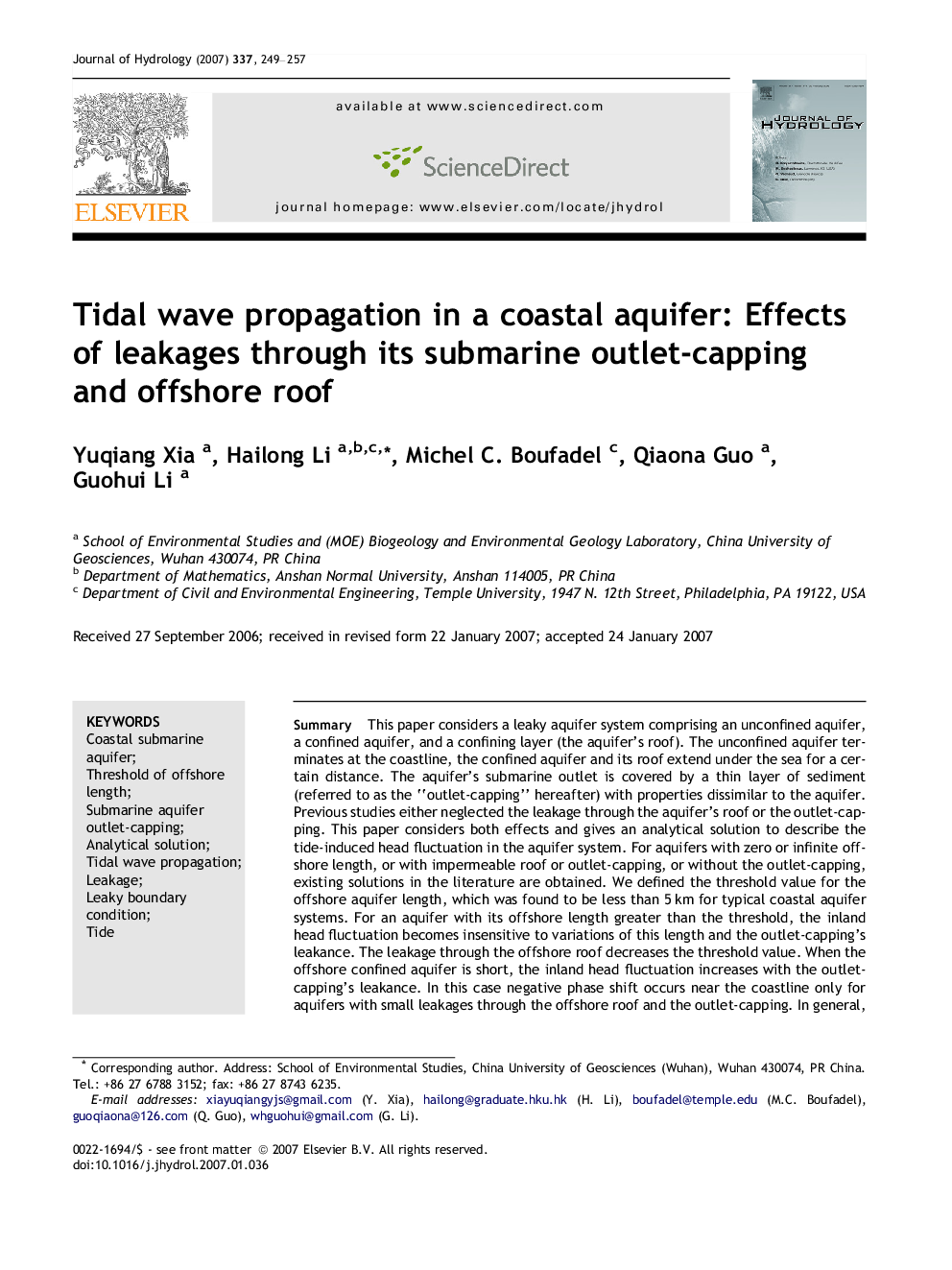| Article ID | Journal | Published Year | Pages | File Type |
|---|---|---|---|---|
| 4580001 | Journal of Hydrology | 2007 | 9 Pages |
SummaryThis paper considers a leaky aquifer system comprising an unconfined aquifer, a confined aquifer, and a confining layer (the aquifer’s roof). The unconfined aquifer terminates at the coastline, the confined aquifer and its roof extend under the sea for a certain distance. The aquifer’s submarine outlet is covered by a thin layer of sediment (referred to as the “outlet-capping” hereafter) with properties dissimilar to the aquifer. Previous studies either neglected the leakage through the aquifer’s roof or the outlet-capping. This paper considers both effects and gives an analytical solution to describe the tide-induced head fluctuation in the aquifer system. For aquifers with zero or infinite offshore length, or with impermeable roof or outlet-capping, or without the outlet-capping, existing solutions in the literature are obtained. We defined the threshold value for the offshore aquifer length, which was found to be less than 5 km for typical coastal aquifer systems. For an aquifer with its offshore length greater than the threshold, the inland head fluctuation becomes insensitive to variations of this length and the outlet-capping’s leakance. The leakage through the offshore roof decreases the threshold value. When the offshore confined aquifer is short, the inland head fluctuation increases with the outlet-capping’s leakance. In this case negative phase shift occurs near the coastline only for aquifers with small leakages through the offshore roof and the outlet-capping. In general, the combined actions of the tidal loading, the leakage and length of the offshore roof, and the leakage of the outlet-capping lead to complex, non-monotonic dependency of the inland head fluctuation on the aquifer parameters.
